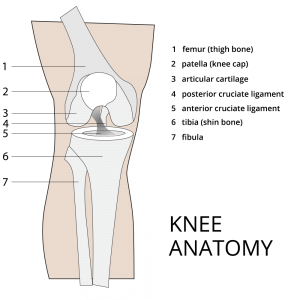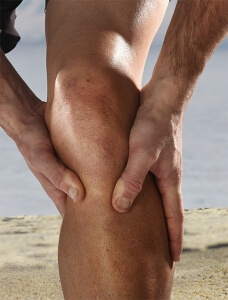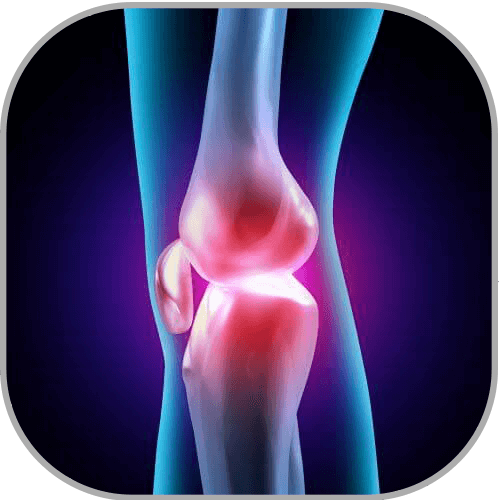 Patellofemoral stress syndrome, also known as “runner’s knee” or “jumper’s knee”, is an extremely common cause of knee pain, especially, but not limited to, athletes.
Patellofemoral stress syndrome, also known as “runner’s knee” or “jumper’s knee”, is an extremely common cause of knee pain, especially, but not limited to, athletes.
The patellofemoral joint is located in the front of the knee where the patella (kneecap) meets the femur (thigh bone). The patella rests in a groove at the end of the femur, called the trochlea. When the patella is off balance, movement and pressure can cause pain in the front of the knee around the kneecap.
Patellofemoral pain can often be treated with rest or physical therapy; however, symptoms may also indicate a more serious problem. If you’re experiencing ongoing pain, swelling, or weakness, be sure to visit your doctor determine the cause.
What Causes Patellofemoral Pain?
Patellofemoral Stress Syndrome is often caused by patellar maltracking within the trochlear groove. This imbalance can be caused by a variety of factors such as:
- Repeated stress on the joint
- Limb malalignment
- Muscular weakness or stiffness
- Cartilage damage
- Training errors–such as improper technique, changes in surface, or unsuitable footwear
- Abnormal bony anatomy of the patella or trochlea
- Tendon abnormalities or injuries
How Can Weakness in the Hip Cause Knee Pain?
Although the muscles of the hip and buttocks do not directly attach to the patella, it is not uncommon for impaired gluteal strength to cause knee pain. The gluteal muscles allow extension, abduction, and rotation of the hip joint. Weakening of these muscles allows the thigh to rotate inwards, which, in turn, puts excessive stress on the knee joint leaving it susceptible to pain and injury.
Symptoms of Patellofemoral Stress Syndrome
 Symptoms of patellofemoral stress syndrome can make daily tasks extremely difficult. These symptoms include:
Symptoms of patellofemoral stress syndrome can make daily tasks extremely difficult. These symptoms include:
- Pain going up or down stairs
- Pain when running, jumping, or squatting
- Anterior knee pain (pain in the front of the knee)
- Sitting for extended periods (also known as a “movie-goer” sign or “theater” sign)
- Weakness or the feeling of the knee “giving out”
Why does sitting cause knee pain?
When the knees are bent at 30 degrees of flexion, the patella is engaged within the trochlear groove. When sitting, the knees are often bent at 90 degrees or more which causes compression on the kneecap.
Diagnosis
An accurate diagnosis is the first step in determining a successful treatment plan. Since conditions such as patellar instability, dislocation, or cartilage injuries can mimic patellofemoral syndrome, a thorough evaluation is needed to determine the exact cause of symptoms.
An evaluation typically begins with a discussion of the history of the problem including when symptoms began, the location of the pain, and any aggravating or exacerbating factors.
Your physician will then test for quadricep stiffness/weakness, limited patellar mobility, or pain caused by abnormal patellar movement, also known as “patellar grind”.
Following a physical exam, X-rays may be ordered to view the alignment of the knee itself as well as patellar alignment within the trochlea.
Treatment & Recovery
Typically, the main line of treatment for patellofemoral pain is physical therapy, often focusing on stretching and strengthening the gluteal and quadriceps muscles. Rest, NSAIDs (Advil, Motrin, Aleve), and kinesiology taping or bracing can also be used to relieve symptoms.
Exercises may include:
*Certain strengthening activities should be avoided as they can cause further damage. Be sure to talk to your doctor or therapist before starting an exercise program.
- Closed chain short arc quad exercises
- Core strengthening
- Gluteal (buttock) strengthening
- Quad stretching
- Hip flexor stretching
- Cross-training exercises: elliptical training, swimming, cycling, Pilates, yoga
Activities to avoid:
- Open chain activities (activities which allow your feet to move without contacting the floor; e.g. seated leg extensions)
- Deep knee flexion activities (knee generally bent greater than 90 degrees)
- High-impact activities (running, jumping, heavy lifting)




